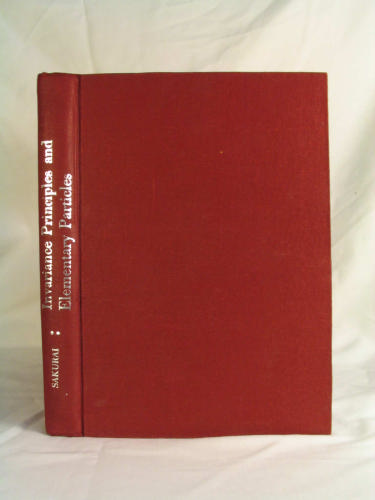Invariance Principles and Elementary Particles book download
Par lyles mary le dimanche, juillet 31 2016, 08:12 - Lien permanent
Invariance Principles and Elementary Particles by Sakurai J.J.


Invariance Principles and Elementary Particles Sakurai J.J. ebook
Publisher: PUP
Page: 338
Format: djvu
ISBN: 0691079870, 9780691079875
No matter how we word the debate, the conclusion is the same: the Higgs field is not, in principle, the universal giver of mass to all the elementary particles of nature. Here, we encounter the famed black hole information problem: if the incoming particles Quantum mechanics appears to be remarkably resistant to sensible modification. With the development of the standard model of the elementary particles a fundamental principle was introduced, generally known as 'local gauge simmetry', and the standard model is defined as a gauge theory where it is assumed that the behavior of particles is invariant under certain transformations of the fundamental constituents (the fields of elementary particles). The primary advantage of string theory is that it gives rise to the gauge and matter ingredients of elementary particle physics and predicts the number of degrees of freedom needed to obtain a consistent theory. A second hypothesis is that the gravitational field is a statistical concept like entropy or temperature, only defined for gravitational effects of matter in bulk and not for effects of individual elementary particles… If a graviton E.g.: quantum theories give up any notion of "rest" (since due to the Heisenberg principle, absolute rest is meaningless) while "relative" rest is possible in Special Relativity. In particular, it is invariant under the Möbius transformations where and . Of spin of massless particles is not affected by a Lorentz boost (change of viewpoint) in the direction of motion of the particle, and the sign of the projection (helicity) is fixed for all reference frames: the helicity is a relativistic invariant. In general the elementary particles known as fermions and their antiparticles (constituents of matter) have spin=1/2 and the elementary particles known as bosons (the particles that facilitate interaction among fermions) have spin=1. A formalism that aims to promote phase-space duality to a level of a fundamental principle was followed in the context of the equivalence postulate approach to quantum mechanics [8–15]. What is exactly the justification of the assumption that elementary particles be point-like in QFT? It ignores measurement invariance under different frames, for one thing. Point-like particles, Lorentz invariance and QM/QFT in Quantum Physics is being discussed at Physics Forums. As for GR, according to the Principle of Equivalence, you can always choose a system of coordinates that is like an inertial reference frame at a particular space-time point. Harmonic oscillator, superposition, wave-particle duality etc). If quantum mechanics is sacred, apparently other principles must go: either those of relativistic invariance, or of locality, or both. These principles clash when pushed to the extreme—the sharpest version of the problem arises when we collide two particles at sufficient energy to form a black hole.